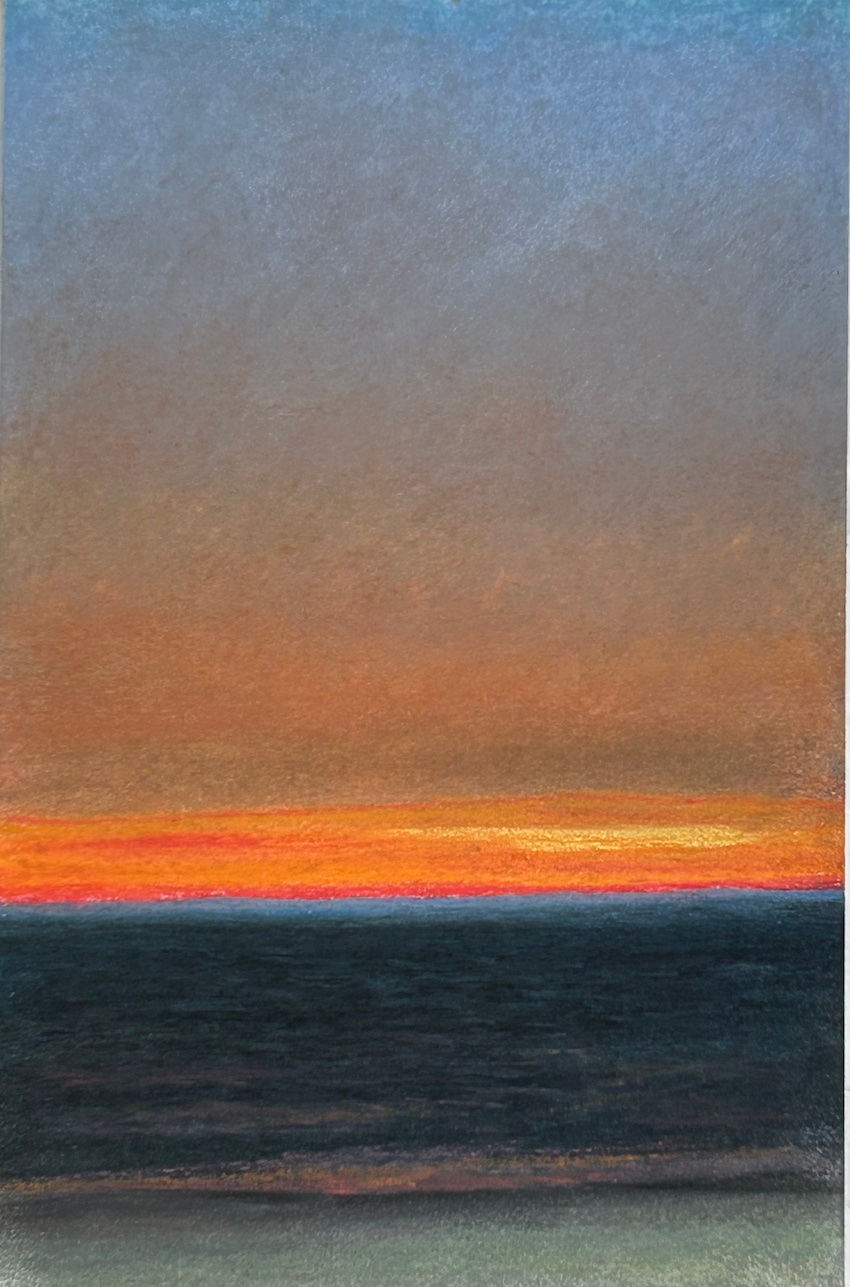Madeleine Popkin | USA
- Ruta UM
- 2024-05-15
- 3 min. skaitymo
Atnaujinta: 2024-05-27
Introduction:
Madeleine Popkin is an interdisciplinary artist based in Chapel Hill, North Carolina with a background in painting, sculpture, and performance, whose work focuses on digital information overload and our species' relationship to the natural environment, specifically addressing climate change through the lens of prehistory and interspecies sensory connections. After earning a BFA from Cornell University's College of Architecture, Art, and Planning, she drew inspiration from her North Carolina roots, particularly the ever-changing Outer Banks coastlines threatened by climate change. Madeleine is currently a writer for the bicoastal live virtual performance "The Great Climate Change," depicting the lives of climate activists' descendants seven generations into a future of collapsing ecosystems. She recently received a grant from Harry Belafonte’s Sankofa Foundation to create a hand-painted watercolor animation video essay detailing the history of California's clean water supply for their Civic Engagement initiative. In 2020, Madeleine danced in a site-specific performance piece choreographed by Killian Manning at the grounds of a removed Confederate monument on UNC's campus. She also annually performs in "Jane's Walk" site-specific performances in NYC, engaging the public in conversations about the future of their neighborhood inspired by the essays of urban activist Jane Jacobs.
Madeleine’s work aims to use the universal language of the arts to help communicate scientific information by translating critical research into visceral sensory experiences. Her work spans mediums from large-scale acrylic paintings, pastels, sound installation, and performance. Throughout her collaborations with scientists and research teams, she emphasizes that art is and always has been the most effective mode of communication our species can use to share visceral and life-changing information about our environment, and right now may be the moment we need it most. Her painting work visualizes the collective sensory overload that all living creatures experience in this anthropogenic age through tableaus of digital culture. During an era where a majority of the world lives digitally removed from the ecosystems we rely on, her work aims to address these gaps in time, species, and material priorities. Through collaboration with experts in climate-related fields, Madeleine is dedicated to visualizing the lived experiences of the animals, ancient populations, and ecosystems we rely on to allow us to understand other ways of being, inspiring action through visceral communication in an effort to collectively envision a more equitable and sustainable future for our planet.
Portfolio:



Residency Project Description:
This project seeks to create an immersive sound installation that exemplifies the experience of sea creatures living in an increasingly overwhelming underwater environment, aiming to raise awareness about the detrimental effects of human-generated noise pollution on marine life using audio recordings collected by bioacoustic scientists in Klaipeda and throughout the US.
With these recordings provided by local experts in marine bioacoustics, I will recreate the underwater sonic environment that whales, seals, and other echolocation-using marine life are forced to navigate daily in order to survive. The installation will include sound-responsive light components and paintings of sonograms to help communicate this sensory overload to the visually focused human nervous system. These visual components in combination with the soundscapes will allow visitors to experience firsthand the challenges marine life faces in a world dominated by human-generated noise.
This installation aims to raise public awareness of our impact on noise levels in local marine ecosystems throughout the Baltic Coastline of Lithuania, highlighting ways local communities and enterprises can reduce noise pollution and shipping traffic. A larger-scale goal of this project will be to engage corporations that contribute large amounts of noise pollution in these locations in a conversation about how they can begin to reduce the level of their sonic disruption on the environments they rely on for profit. The installation will include links to civic engagement efforts and conservation initiatives, encouraging an open dialogue with local officials and policymakers. This installation and the public engagement it encourages will provide the momentum that is necessary for the establishment of noise pollution regulations for local harbors along the East Coast of the Atlantic and the Lithuanian Baltic Coast beginning with Klaipeda Harbor.
Photos of Implementation:













Komentarai